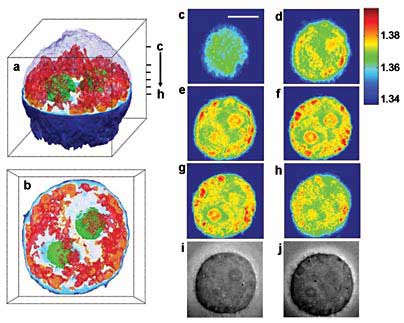Government of Nigeria approves nanotechnology plan
The Federal Government of Nigeria has approved the deployment of nanotechnology under the fourth national development plan, an official has said.
Aug 13th, 2007
Read more
The Federal Government of Nigeria has approved the deployment of nanotechnology under the fourth national development plan, an official has said.
Aug 13th, 2007
Read moreWidespread use of nanoparticles in sunscreens is focus of guide being released Tuesday, Aug. 14.
Aug 13th, 2007
Read moreResearchers turn everyday paper into resilient, rechargeable energy storage device.
Aug 13th, 2007
Read moreHypershort flash of visible light produces 'white' attosecond X-ray light.
Aug 13th, 2007
Read moreEPA, the U.S. Environmental Protection Agency, will hold a public meeting, Thurs., Sept. 6 and Fri., Sept. 7, 2007 in Arlington, Va., in line with its continuing effort to better understand the potential risks and benefits of nanotechnology.
Aug 13th, 2007
Read more A new imaging technique developed at MIT has allowed scientists to create the first 3D images of a living cell, using a method similar to the X-ray CT scans doctors use to see inside the body.
A new imaging technique developed at MIT has allowed scientists to create the first 3D images of a living cell, using a method similar to the X-ray CT scans doctors use to see inside the body.
Aug 12th, 2007
Read moreLabs experience in computing, nanotechnology, modeling, simulation and surety critical in emerging cognitive revolution
Aug 11th, 2007
Read moreRequirements for nanomaterials under the New Substances Notification Regulations (Chemicals and Polymers) in Canada.
Aug 11th, 2007
Read moreSixty years after independence, Indian science has taken giant strides in virtually every arena - from space vehicles to vaccines.
Aug 11th, 2007
Read more Here is a perfect entry for our 'Slow News Friday" section.
Here is a perfect entry for our 'Slow News Friday" section.
Aug 10th, 2007
Read moreWhen assembled into free-standing membranes, the material, a two-dimensional 'paper' made out of titanium-based nanowires, provides solutions for a variety of applications, including chemical and water filtration, solar cells, drug delivery and non-woven textiles stable at high-temperature.
Aug 9th, 2007
Read moreResearchers have demonstrated the ability of a third-generation nanofountain probe to directly deposit gold nanoparticles, 15 nanometers in diameter, onto silicon substrates.
Aug 9th, 2007
Read moreDifferent segments of nanotechnology promise a high medical potential, for example drug delivery systems. They will be one of the focal subjects at this year's NanoEurope Fair & Conference in St.Gallen from September 11 �?? 13.
Aug 9th, 2007
Read moreCould extraterrestrial life be made of corkscrew-shaped particles of interstellar dust? Intriguing new evidence of life-like structures that form from inorganic substances in space.
Aug 9th, 2007
Read moreIn an effort to drive further research in engineering fields such as green innovation, imaging and smart document technology, nanotechnology and MEMS, Xerox Corporation is providing a $1 million grant to fund fellowships at MIT.
Aug 9th, 2007
Read moreA research team has yielded another clue in the glass puzzle, demonstrating that, unlike liquids, glasses aren't comfortable in confined spaces.
Aug 9th, 2007
Read more